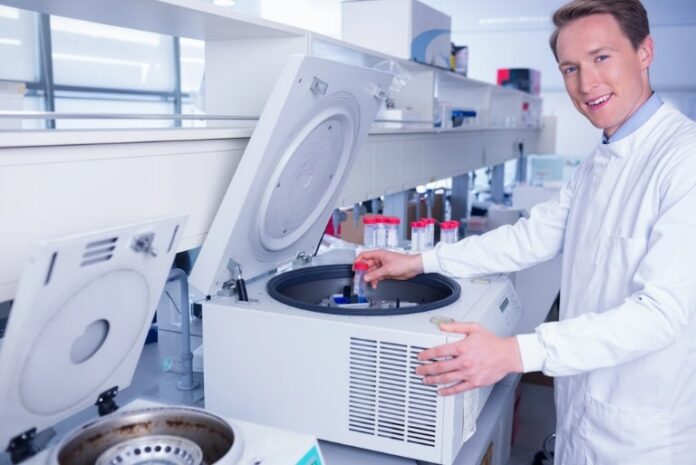Centrifuges are essential tools in labs. They are used to separate components of a sample based on density. They spin at high speeds, creating a force that pulls heavier particles to the bottom while lighter ones stay on top.
This process is key in fields like biology, chemistry, and medical research. However, not all centrifuges or their tubes are the same. The types of centrifuges vary widely. Each is designed for specific tasks, sample volumes, and materials.
Some centrifuges are small, like benchtop models, perfect for quick spins in a lab. Others are large, like ultracentrifuges, built for high-speed separation of tiny particles. The tubes you use in these machines also matter. Some are plastic, others glass and their sizes and shapes depend on the centrifuge and the experiment.
Choosing the right tube material and size is critical for safety and accuracy. For instance, a mismatch can lead to leaks, tube breakage, or skewed results. Speed ratings, rotor types, and lab goals all influence your choice.
In this article, we will explore the different tubes and their sizes. We will also discuss the role of materials such as polystyrene, polypropylene, and glass. By the end, you will know how to pick the best option for your needs. You will ensure smooth, reliable experiments.
Types of Centrifuge Tubes and Their Uses
Centrifuge tubes are the containers that hold your samples during spinning. They come in various shapes, materials, and sizes. Each is designed for specific purposes. Here are the main types of centrifuge tubes and their uses:
- Conical Tubes. These have a tapered bottom, ideal for separating sediments. Common in biology, they are great for collecting cells or proteins after spinning.
- Round-Bottom Tubes. They are used in high-speed centrifuges. Their shape helps evenly distribute force. This makes them perfect for delicate samples like DNA.
- Microcentrifuge Tubes. Small and compact, they are designed for tiny samples, often less than 2 mL. They are a staple in molecular biology labs for quick spins.
- PCR Tubes. They are specialized for polymerase chain reaction (PCR) processes. They hold very small volumes and fit into thermal cyclers after centrifugation.
- Oak Ridge Tubes. Built for high-speed spins, these are thick-walled. They are often used in industrial or biochemical labs for larger volumes.
Each type of tube is designed to match specific centrifuges and experiments. For example, microcentrifuge tubes work in small, fast machines. Meanwhile, Oak Ridge tubes handle tougher, high-speed tasks. Some tubes come with caps – snap or screw – for a secure seal. Always check the tube’s compatibility with your centrifuge and sample to avoid leaks or breaks. Consider your sample type, too. Liquids, cells, or viscous materials may need specific tubes. Safety tip: never overfill, as this can cause spills or damage.
Centrifuge Tube Sizes: A Complete Volume Guide
Size matters when picking a centrifuge tube. The tube centrifuge sizes range from tiny to large. Choosing the right one depends on your sample volume and centrifuge model. Common sizes include:
- Microcentrifuge Tubes. These hold 0.5 mL, 1.5 mL, or 2 mL. They are perfect for small samples. For example, DNA, RNA, or proteins in molecular biology.
- 5 mL Tubes. A newer option, these bridge the gap between micro and larger tubes. They are great for medium-sized samples in research.
- 15 mL Tubes. Common in cell culture, these conical tubes handle bigger volumes. For example, separating cells from a liquid medium.
- 50 mL Tubes. These are a go-to for larger samples. They are often used in biotech for processing bigger batches of cells or solutions.
- 250 mL and Up. Used in industrial or large-scale labs, these handle huge volumes. For example, in vaccine production or chemical separations.
Always match the tube size to your centrifuge’s rotor. Using the wrong size can cause imbalance, damage, or unsafe spins. Check the maximum volume and fill tubes to the recommended level – usually two-thirds full – for best results and safety. Larger tubes often need adapters for smaller rotors. Also, consider sample loss. Smaller tubes minimize waste for precious samples. The goals of your laboratory and equipment specifications guide the choice.
Polystyrene Tubes vs Polypropylene Tubes: Key Differences
When choosing centrifuge tubes, material is a big factor. The debate of polystyrene tubes vs. polypropylene tubes comes down to strength, clarity, and use. They differ in several key ways:
- Strength. Polypropylene tubes are tougher and can handle high-speed spins without breaking. Polystyrene is more brittle. It is better for low-speed or gentle tasks.
- Clarity. Polystyrene is crystal clear. This makes it ideal for viewing your sample, like in optical tests. Polypropylene is less transparent but still functional.
- Chemical Resistance. Polypropylene wins here, resisting harsh chemicals like acids or solvents. Polystyrene can degrade with certain substances, limiting its use.
- Cost. Polystyrene tubes are often cheaper, good for basic lab work. Polypropylene costs more but lasts longer in tough conditions.
- Uses. Polystyrene is common for light tasks, like storing samples or low-speed spins. Polypropylene is the choice for high-speed centrifugation, like DNA extraction.
When considering polystyrene tubes vs. polypropylene tubes, for safety and accuracy, match the material to your task. If you are spinning at high speeds or using strong chemicals, go with polypropylene. For simple, low-speed work, polystyrene might be enough. Check the pH of your sample and temperature too. Extreme conditions favor polypropylene. Always read the manufacturer specs for compatibility and max spin speeds to avoid mishaps.
Eppendorf Tube vs Microcentrifuge Tube: What’s the Difference?
The terms Eppendorf tube vs. microcentrifuge tube often cause confusion. However, they are closely related. These terms differ as follows:
- What is an Eppendorf Tube? Eppendorf is a brand, and their small, plastic tubes (usually 1.5 mL) are a lab standard. They are made of polypropylene, with a snap-cap for a tight seal. It is perfect for small samples.
- What is a Microcentrifuge Tube? This is a general term for small tubes (0.5 mL to 2 mL) used in microcentrifuges. They come from many brands, not just Eppendorf, and vary in design.
- Material. Both are usually polypropylene, tough enough for high-speed spins, and resistant to chemicals.
- Design. Eppendorf tubes have a specific snap-cap and shape, often with volume markings. Other microcentrifuge tubes might have screw caps or different styles.
- Uses. Both handle tiny samples – DNA, RNA, or proteins – for tasks like PCR or quick spins. Eppendorf is just a trusted name within this category.
As a result of the Eppendorf tube vs. microcentrifuge tube comparison, an Eppendorf tube is a type of microcentrifuge tube, but not all microcentrifuge tubes are Eppendorf. Choose based on your centrifuge, sample, and preference for brand or features. Some tubes offer extra features like color-coding or graduations for easy measuring. Check max spin speeds and seal quality for safety in your lab.
When to Use Glass Centrifuge Tubes
While plastic tubes dominate labs, centrifuge glass tubes still have a place. They are not as common but shine in specific situations. Glass tubes are appropriate in these situations:
- Chemical Resistance. Glass withstands harsh solvents and chemicals that might damage plastic. For example, strong acids, bases, or organic compounds such as chloroform. This durability makes centrifuge glass tubes ideal for chemical analysis or reactions involving aggressive substances. Unlike some plastics, glass will not degrade, leach, or react. It ensures your sample stays pure and uncontaminated during processing.
- High Temperatures. Glass tubes handle heat better than most plastics. This makes them perfect for processes requiring sterilization or high-temperature spins. They can be autoclaved safely. This is crucial for laboratories requiring sterile conditions, such as in microbiology or tissue culture. This heat resistance also suits experiments where samples must be heated before or during centrifugation.
- Clarity. Centrifuge glass tubes offer excellent visibility. This provides a clear view of your sample. This is perfect for observing layers, sediments, or color changes during low-speed centrifugation or optical tests. The transparency of glass helps researchers monitor separation in real-time. This can be critical for precise results in analytical chemistry or quality control.
- Reusability. Unlike many plastic tubes, glass can be cleaned and reused. This saves costs in labs with frequent use. With proper washing and care, they last through multiple cycles. This makes them economical for routine tasks. This sustainability aspect appeals to labs aiming to reduce waste and manage budgets effectively.
- Limitations. Glass is fragile and can shatter at high speeds. Therefore, they are best suited for low- to medium-speed spins. Always check your centrifuge’s limits to avoid accidents. Inspect for cracks or chips before use. Verify rotor compatibility before use. Plastic is often safer and easier. However, glass shines when chemical or heat resistance is key.
Use centrifuge glass tubes when working with tough chemicals or heat. However, avoid them for high-speed tasks where safety is a concern. Ensure your centrifuge is compatible. Always inspect glass tubes for cracks before use to prevent accidents. Plastic is often safer and easier, but glass has unique strengths. Store them carefully to avoid chips or breaks before use.




